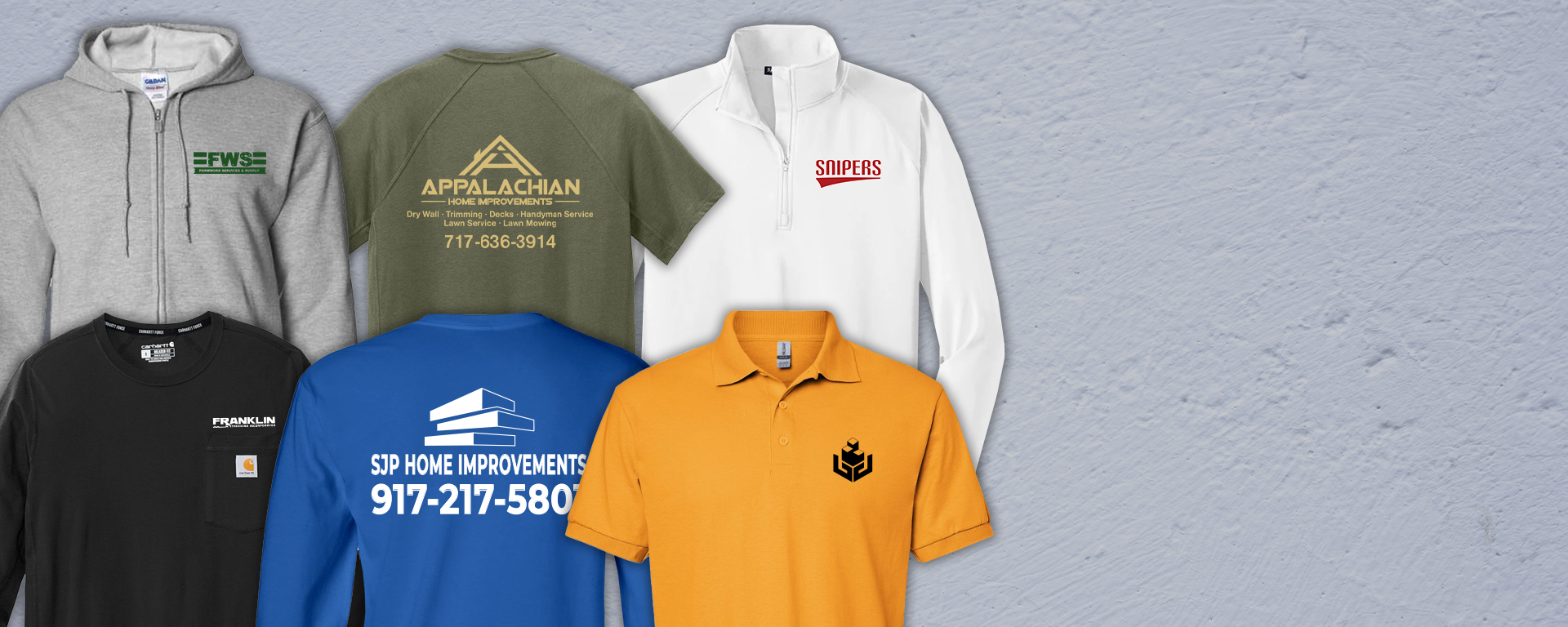Comprehending Clothing: The Relevance of Textile Selections in Your Closet
The option of fabric in apparel plays a pivotal function in both looks and performance. Different products offer varying degrees of longevity, breathability, and comfort, directly influencing the wearer's experience. Comprehending these nuances can boost one's wardrobe considerably. Yet, numerous neglect just how these options can affect not just personal design, yet additionally sustainability. What material decisions could redefine your closet and align it with both style and duty?
The Function of Textile in Fashion and Capability

Usual Material Kinds and Their Attributes
When selecting clothes, understanding the attributes of common fabric kinds is crucial for making notified choices. Cotton, a widely-used all-natural fiber, is recognized for its breathability, gentleness, and convenience, making it suitable for casual wear and day-to-day garments. Linen, an additional natural alternative, boasts superb moisture-wicking properties and a distinct structure, suitable for cozy climates.Wool, commonly preferred for its heat and longevity, varies in excellence; merino wool is soft versus the skin, while coarser types are made use of for outerwear. Artificial textiles like polyester and nylon provide resilience and resistance to creases, making them preferred for activewear and travel garments. Blends, which incorporate natural and synthetic fibers, can improve functionality while maintaining comfort. By recognizing these textile qualities, individuals can select clothes that straightens with their way of life and aesthetic choices.
Breathability and Comfort: Selecting the Right Fabrics for Various Environments
Choosing the best fabrics for various climates can considerably boost convenience and overall wearability. Breathable products are vital in hot environments, as they allow air flow and wetness evaporation. Fabrics such as cotton, linen, and moisture-wicking synthetics efficiently draw sweat away from the body, maintaining the wearer cool and dry. On the other hand, in chillier climates, thicker fabrics like woollen or fleece provide insulation while retaining breathability, ensuring warmth without overheating.Additionally, the choice of material weight plays an essential duty; light-weight fabrics are better for summertime, whereas much heavier options are fit for winter months wear. Recognizing the distinct buildings of each material allows individuals to dress properly for differing weather. Eventually, choosing comfortable and breathable materials customized to certain environments can significantly boost everyday convenience and improve the total experience of using garments.
Sturdiness and Treatment: How Material Affects Longevity of Your Closet
Choosing the best products can considerably impact the toughness and treatment requirements of a closet. Fabrics such as cotton and polyester are recognized for their durability and simplicity of maintenance, making them optimal for daily wear. On the other hand, fragile materials like silk and shoelace need more mindful handling and specialized cleansing techniques, which can raise the time and initiative required for care. Branded Clothing.Durability is additionally affected by the fabric's weave and coating; securely woven materials often tend to stand up to deterioration much better than freely woven alternatives. Furthermore, synthetic blends often provide enhanced toughness, incorporating the finest high qualities of multiple fibers.Understanding the care guidelines for each and every material is important, as incorrect washing or drying out can bring about premature wear. Inevitably, selecting long lasting products can lead to a longer-lasting closet, lowering the regularity of replacements and contributing to a much more sustainable style choice
The Influence of Fabric on Fit and Silhouette

Sustainable Material Options: Making Eco-Friendly Choices
The influence of material extends beyond fit and silhouette to include ecological elements, prompting an expanding interest in sustainable material options. Green textiles, such as organic cotton, hemp, and Tencel, are getting grip among customers who prioritize sustainability in their wardrobes. These materials are usually created with fewer chemicals and water, lowering their ecological footprint.Additionally, recycled materials, made from post-consumer waste, supply a cutting-edge remedy to the fabric market's pollution problem. Brands progressively embrace transparency in their sourcing approaches, permitting consumers to make educated decisions concerning their purchases.Choosing sustainable fabrics not just supports ethical methods but also motivates the style industry to adopt more liable manufacturing approaches. As recognition of ecological concerns increases, individuals are advised to show on the long-lasting effect of their fabric choices, fostering an activity towards a much more ecologically aware and anonymous sustainable approach to style.
Raising Style: Just How Fabric Can Change an Outfit
While lots of might concentrate on shade and cut when choosing an attire, the choice of fabric plays a vital duty in elevating design and boosting total look. Various products convey unique moods and messages; as an example, silk emanates high-end and sophistication, while denim offers an informal, relaxed ambiance. The appearance and drape of a material can significantly modify the silhouette, with organized textiles supplying a refined appearance and softer ones creating an extra fluid, loosened up aesthetic.Moreover, the weight of the textile influences wearability across seasons. Lightweight materials like bed linen and cotton are suitable for summertime, while much heavier products such as wool and velvet provide warmth and beauty in cooler months. Recognizing material properties, such as breathability and stretch, likewise empowers individuals to make educated options that improve convenience without compromising style. Inevitably, the ideal textile can change an attire from common to remarkable, making it a vital consideration in any type of closet.
Regularly Asked Inquiries
Just how Do I Determine the Textile Web Content of My Apparel?
To identify textile web content, one can analyze treatment tags, conduct burn tests for fiber identification, or get in touch with fabric swatches. his comment is here These techniques assist separate materials, making certain informed options for clothing treatment and upkeep in daily wear.
Can Material Choice Affect My State Of Mind or Self-confidence?
Material selection can substantially influence an individual's mood and confidence. Branded Clothing. Certain materials might stimulate feelings of comfort or sophistication, while others can feel unflattering or restrictive, inevitably influencing self-perception and psychological wellness throughout the day
What Fabrics Are Ideal for Delicate Skin?
For people with delicate skin, all-natural textiles like cotton, bamboo, and bed linen are usually recommended. These products are breathable, hypoallergenic, and less likely to cause irritation, making them suitable options for convenience and skin wellness.
How Do I Effectively Laundry and Look After Different Fabrics?
To correctly clean and care for different fabrics, one must consider each material's particular needs, consisting of temperature level settings, detergents, and drying methods, guaranteeing longevity and keeping the textile's original top qualities for excellent use.
Are There Details Fabrics for Athletic or Efficiency Wear?
Sports or performance wear usually makes use of fabrics such as nylon, spandex, and polyester. These products are developed for moisture-wicking, breathability, and flexibility, improving motion and convenience during exercises while providing toughness and assistance. Conversely, in cooler environments, thicker textiles like wool or fleece provide insulation while retaining breathability, ensuring heat without overheating.Additionally, the selection of fabric weight plays a crucial role; lightweight fabrics are more suitable for summer, whereas larger options are matched for wintertime wear. In contrast, fragile products like silk and lace call for more mindful handling and specialized cleansing methods, which can enhance the time and initiative required for care.Durability is also affected by the textile's weave and surface; firmly woven fabrics tend to withstand wear and tear better than loosely woven options. In contrast, rigid materials can restrict movement yet give a timeless, sleek look.Moreover, the density and texture of the material can affect the visual perception of body shape. The influence of material extends past fit and silhouette to incorporate environmental variables, triggering a growing passion in lasting material options. The texture and drape of a textile can dramatically change the silhouette, with organized materials supplying a refined appearance and softer ones developing an extra fluid, unwinded aesthetic.Moreover, the weight of the read material affects wearability across seasons.
Comments on “How Branded Clothing Combines Fit, Function, and Fabric Innovation”